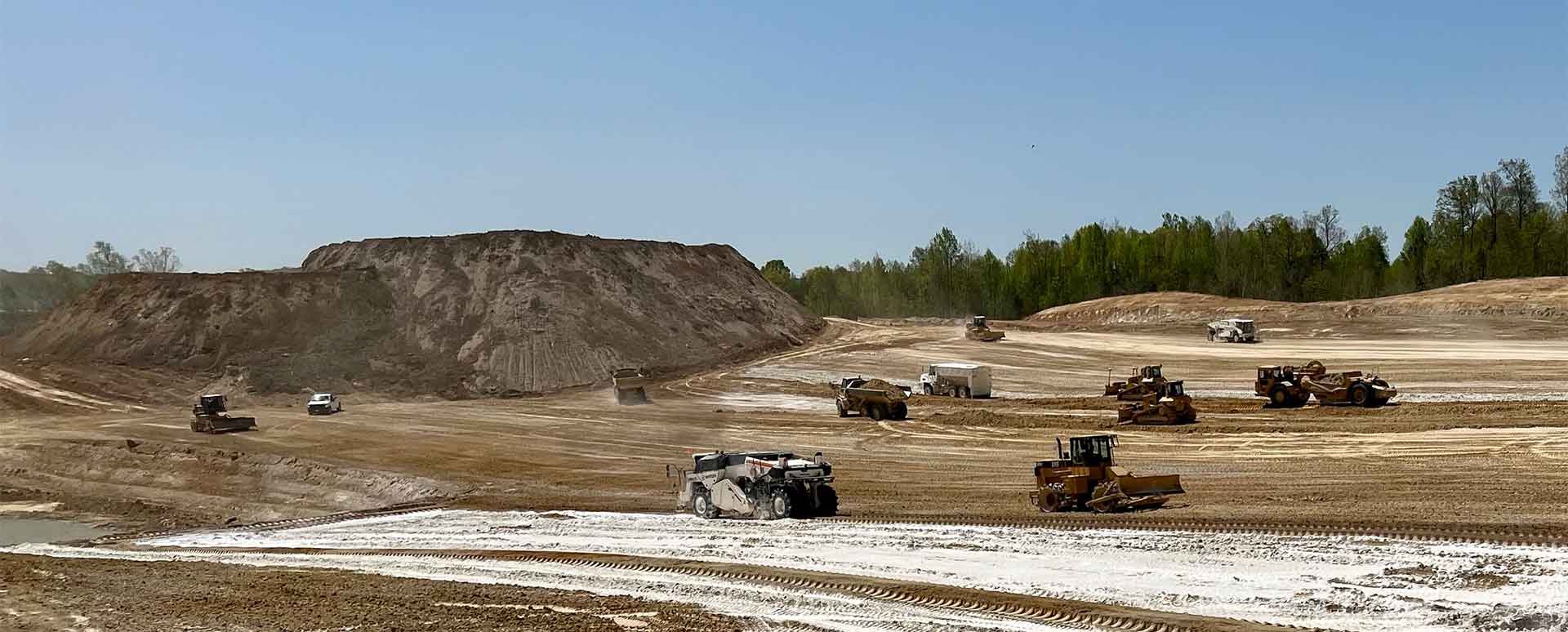Lime-based Products: Frequently Asked Questions

1. What are the selection criteria for the various lime products?
a. Soil type: Quicklime, Calciment® LKD and Portland cement each have their place depending on the soil’s plasticity and clay content. Refer to our Chemical Stabilization Selection Guide to determine the most effective product by soil type.
b. Soil water content: For soils above their optimum water content, quicklime provides the highest drying potential, followed by Calciment® LKD.
c. Dust control: During periods of high wind, applying water to the soil and the use of a shroud when spreading lime are beneficial for reducing dust; however, for severe cases, pebble quicklime or lime slurry can be used for further dust suppression.
d. Spreading equipment: Most spreaders are not able to spread materials larger than 1/4-inch without risk of plugging, which would eliminate the ability to use coarse products such as pebble lime. While not as precise, coarser material may be spread with a motor grader or dozer.
e. Laboratory testing: If preliminary testing is completed in advance, it shall dictate the best product and dosage.
f. DOT specifications: States may restrict the products they allow. Mintek Resources has products approved by over 20 DOTs nationwide. Review our list of DOT approvals.
g. Availability: Some products may be more available than others depending on the location and type.
Let’s work together.
2. Can I use Aglime (agricultural lime) instead of lime products (quicklime or lime kiln dust)?
ANSWER: No. Aglime refers to fine grained limestone and is used predominately in agriculture to amend soil chemistry. Lime, more accurately quicklime, refers to the chemical calcium oxide (CaO), which is produced by calcining limestone in a kiln at temperatures over 825°C. It is calcium oxide, not limestone (CaCO3 ), that is required to effectively dry, modify, and stabilize soil.
3. What is the difference between a mellow period and a cure period?
ANSWER: A mellow period allows for the complete hydration of quicklime before final compaction. Utilizing a soil reclaimer and adequate water during mixing typically reduces the mellow period required to 4 hours or less. A cure period begins after final compaction and is required until adequate strength is obtained to produce a sufficient working platform capable of withstanding anticipated construction traffic.
4. How much water do I need to properly hydrate quicklime?
ANSWER: Every ton of quicklime placed requires approximately 500 pounds of water to complete the hydration process. Water naturally present in the soil is typically sufficient; however, additional water can be applied to maintain optimum moisture content (OMC).
5. Does lime treatment affect vegetation?
ANSWER: Yes. Due to the elevated pH of lime-treated soil, it is recommended to place 3” to 6” of topsoil over the treated area to reestablish vegetation.
6. Does lime treatment alter the OMC and MDD of a soil?
ANSWER: Yes. The addition of lime increases the OMC of a soil while also slightly reducing the maximum dry density (MDD). When compaction is required for density control, a new Proctor curve (ASTM D698 – Standard Proctor or ASTM D1557 – Modified Proctor) must be determined on the treated soil.
7. Can lime be used in FDR projects?
ANSWER: Yes. Depending on underlying soil conditions, lime products can improve sub-base performance, create longer lasting roads, and realize significant cost and time savings compared to traditional re-paving methods. This is especially true for low volume roads, over thin asphalt overlays, with little to no aggregate base, on top of clayey soils.
8. What are typical dose rates associated with lime treatment?
ANSWER: For drying applications, where a rapid decrease in moisture content is desired to meet compaction goals, dose rates are usually 1% to 3%. For soil modification and stabilization, where improving engineering properties is needed, dose rates tend to be in the > 3% range. Lab testing (ASTM D6276) is needed to determine the minimum dose rate needed for stabilization. Check out our Dose Rate Calculator.
9. How much lime is required to dry soil?
ANSWER: Generally, for every percent of quicklime, expect approximately 1.5% reduction in water content. However, this value can vary based on soil type and plasticity. Quicklime is effective due to its affinity for water and the resulting exothermic reaction (release of heat) that occurs as the calcium oxide is converted to calcium hydroxide in the soil. An additional benefit of lime is that it increases the OMC of clay bearing soils.
10. How much does lime cost?
ANSWER: Please reach out to Mintek Resources at 937-431-0218 for current pricing and product availability.
We're here to help you find the best solution for your next project. Let's get started. Give me a call at 937-641-9901.

Josh Weser
Mintek Resources
Related Posts
Mintek Resources Acquires Omni Materials
Mintek Resources, a subsidiary of Carmeuse North America and a leading chemical reagent supplier, is proud to announce the acquisition of Omni Materials, a fellow leader in the calcium-based reagent industry. This strategic acquisition marks a significant milestone...
Storage PIGs: Frequently Asked Questions
Whether you're new to portable storage PIGs or a seasoned site manager, this FAQ page is here to help you understand how Mintek’s dry bulk storage solutions work and how they can keep your project running smoothly. 1. What is a Dry Bulk Storage PIG? ANSWER: A...
Save Time and Money with Mintek’s Lime Stabilization Calculator
Lime stabilization turns challenging soils into durable foundations suitable for the construction industry. When lime-based reagents interact with soil, a chemical process alters its characteristics - binding clay particles, reducing plasticity & shrink-swell...